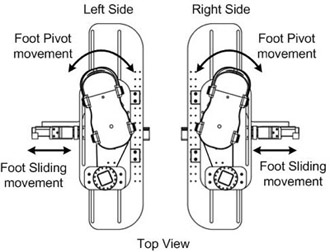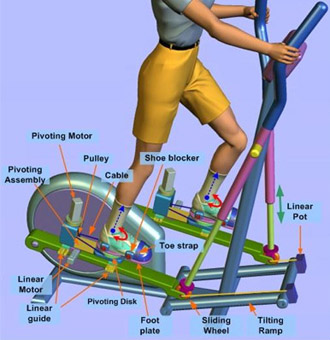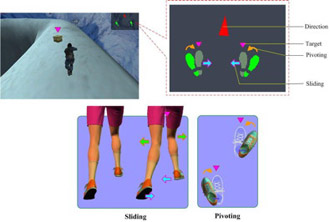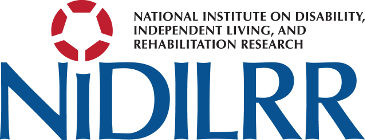Development Activities
Developing a Pivoting-Sliding Elliptical System to Improve Off-Axis Meuromuscular Control in Children with Orthopedic Disabilities
This project is structured to develop an elliptical machine to improve neuromuscular control and stability in children with patellofemoral instability and cerebral palsy. an interactive gaming approach is used to fully engage patients who use the device. anticipated development results include improved neuromuscular control and stability and effective interactive gaming.
- Co-PI's
- Yupeng Ren, M.S.
- Li-Qun Zhang, Ph.D.
- Patient population
- Cerebral Palsy (CP): 18
- Patello femoral Pain Syndrome: 18
- Project goal
- Develop novel off-axis rehabilitation system to train children with severe orthopaedic disabilities
D1 Update: 2012 Annual Meeting
- Progress
- Challenges & Solutions
- Accomplishments
- Opportunities
- Plans for Year 3
D1 Specific Aims
- Design a pivoting and sliding elliptical rehabilitation system with integrated motivating biofeedback training games for children with orthopedic disabilities
- System will follow children during running/walking activities in sagittal plane
- Optional assistance and off-axis pivoting-sliding (training) motions in the frontal and transverse planes
- Guide users to improve neuromuscular control about the off-axes
- Obtain quantitative measurements
- Developed off-axis virtual reality games will further motivate children for more active involvement in the training
- Evaluate the off-axis training system and resulting neuromuscular
control changes in terms of stability, strength, stiffness,
proprioception, and reaction time in tibial rotation and mediolateral
sliding
- Employ a ‘design-build-test-design’ strategy
- Evaluation/quality control paradigm
- Clinical use and further commercialization
D1 Conceptual Model
- Pivoting-sliding elliptical system will be developed to help children improve neuromuscular control in the off-axis (minor-axis) axial and frontal planes
- Training goals relate to maintenance of postural lateral and axial stability
D1 Tasks
- Aim 1
- Mechanical design and assembly
- Embedded control and interface development
- Design controlled pivoting-sliding training modes
- Design user-friendly VR training games
- Aim 2
- Evaluate training system
- Evaluate training-induced neuromechanical changes
D1 Anticipated Timeline
| Tasks | Year 1 | Year 2 | Year 3 | Year 4 | Year 5 | |||||||||||||||
|---|---|---|---|---|---|---|---|---|---|---|---|---|---|---|---|---|---|---|---|---|
| Pivoting-Sliding Elliptical Training System Development | ||||||||||||||||||||
| Aim 1: System development | ||||||||||||||||||||
| Task.1 Mechanical design and assembly | Q1 | Q2 | Q3 | |||||||||||||||||
| Task.2 Embedded system and interface system development | Q3 | Q4 | Q1 | |||||||||||||||||
| Task.3 Design controlled pivoting-sliding training modes | Q4 | Q1 | Q2 | |||||||||||||||||
| Task.4 Design the user-friendly GUI and pivoting/sliding-related VR games | Q2 | Q3 | Q4 | Q1 | Q2 | Q3 | Q4 | Q1 | Q2 | Q3 | Q4 | |||||||||
| Publications & technology patents | Q2 | Q3 | Q4 | Q1 | Q2 | Q3 | Q4 | Q1 | Q2 | Q3 | Q4 | |||||||||
| Aim 2: Clinical evaluate the off-axis training system | ||||||||||||||||||||
| Task.1 Subject recruitment | Q4 | Q1 | Q1 | Q1 | ||||||||||||||||
| Task.2 Experiment for development evaluation | Q1 | Q2 | Q3 | Q4 | Q1 | Q2 | Q3 | Q4 | Q1 | Q2 | ||||||||||
| Task.3 System and function assessment | Q2 | Q3 | Q4 | Q1 | Q2 | Q3 | Q4 | Q1 | Q2 | Q3 | Q4 | |||||||||
| Publications & technology patents | Q1 | Q3 | Q1 | Q3 | Q1 | Q3 | Q4 | |||||||||||||










